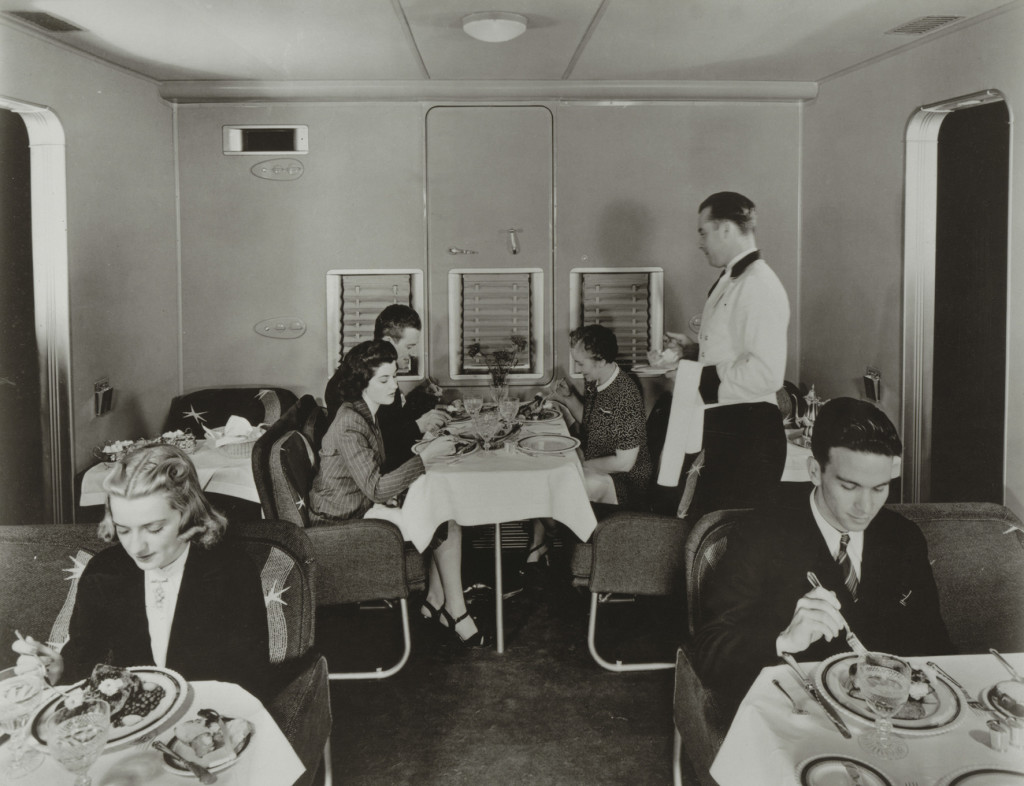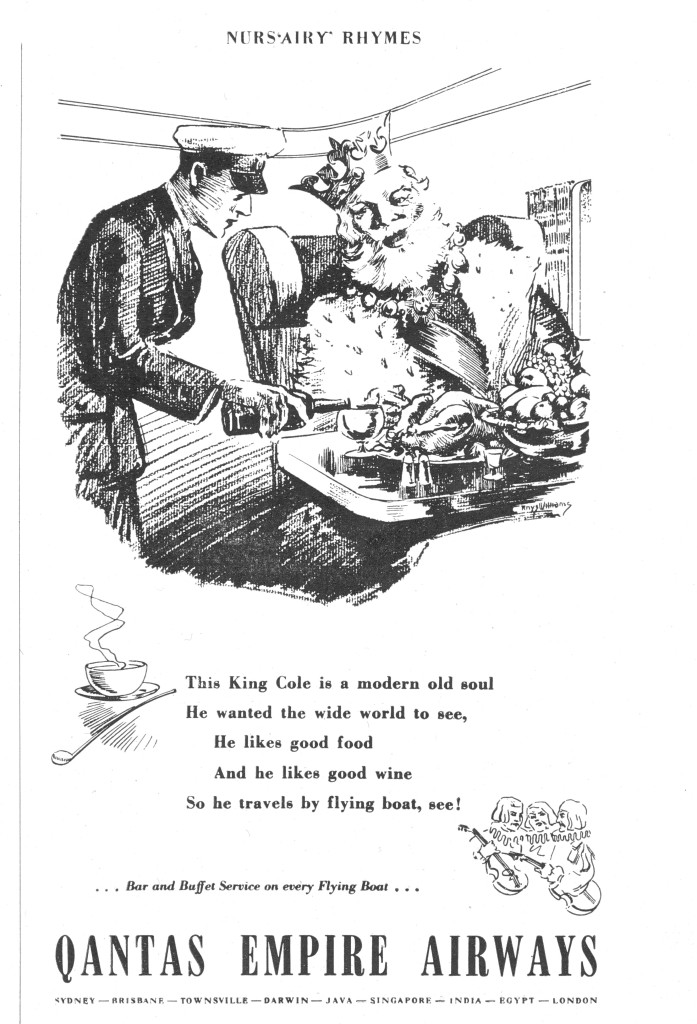Zeppelins were the cruise ships of the skies, and offered unparalleled space for passengers to stroll and sightsee, but their competitors the flying boats managed to almost equal them at mealtime. Look at this picture of dinner aboard a Boeing B-314, which was probably taken in about 1939:
Though the aircraft had cabins and beds for up to 36 passengers, including a deluxe bridal suite, only fourteen people at a time could enjoy the hospitality of the dining room at once. A modern airline executive would look at this picture and figure out how to pack as many people as possible into the space, but in those genteel times it was accepted that passengers would dine in shifts, served by two formally dressed stewards. The tablecloths were linen, the utensils genuine china, crystal, and freshly polished silver.There were no spacious piano bars or lounges as were available on the zeppelins, but the trip across the Atlantic took a mere seventeen hours instead of three days.
Flying Boats circled the world – Imperial Airways flew across Africa, zigzagging between rivers and oceans for landings, and in partnership with Qantas operated services from London to Australia. Qantas boasted about the quality of their inflight meals with this jolly advertisement:
Other flying boat services linked cities in South America, island-hopped across the Pacific, and connected Dutch colonies in Indonesia with the motherland. The flying boat era lasted longer than you might expect – TEAL, the predecessor to Air New Zealand, continued to fly Short Solent flying boats between Auckland and Pago Pago until 1960. It was a quaint way to travel, the first age of international travel surviving into the jet age, and when it ended something wonderful was lost.


